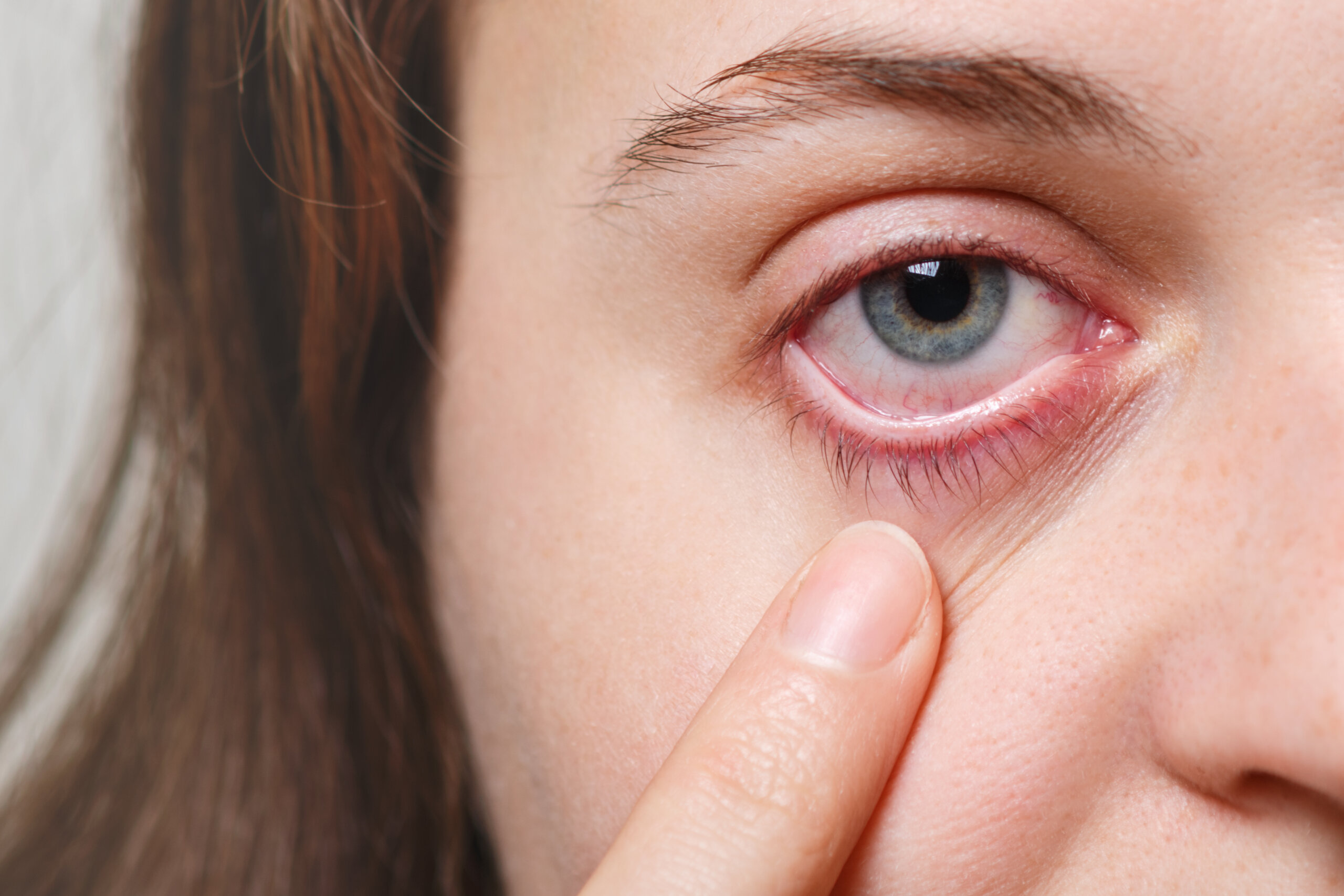Conjunctivitis, commonly known as pink eye, is an inflammation of the thin transparent layer of tissue, called the conjunctiva, that covers the white part of the eye and the inner surface of the eyelid. Despite being a common eye condition, it’s often misunderstood. This guide aims to provide a thorough understanding of conjunctivitis, its causes, symptoms, treatments, and preventive measures.

Image by user18526052 on Freepik
Table of Contents
What is Conjunctivitis?
Conjunctivitis, or pink eye, is characterized by an inflammation or infection of the conjunctiva, the transparent membrane lining the eyelid and eyeball. It’s widely prevalent among children and adults and is highly contagious. However, it’s rarely severe and often resolves on its own without leading to long-term problems.
Causes of Conjunctivitis
There are several potential causes of conjunctivitis, including:
Viral Infections: The most common cause of conjunctivitis is viral, often linked to the same viruses causing the common cold or COVID-19.
Bacterial Infections: Conjunctivitis can also result from bacterial infections caused by different types of bacteria like Staphylococcus aureus, Haemophilus influenzae, Streptococcus pneumonia, and Pseudomonas aeruginosa.
Allergies: Allergic reactions to substances such as pollen, dust, or smoke can cause allergic conjunctivitis.
Irritants: Exposure to irritants like shampoos, pool chlorine, smoke, or certain chemicals can trigger conjunctivitis.
Sexually Transmitted Infections (STIs): Certain STIs, including gonorrhea and chlamydia, can result in conjunctivitis.
Foreign Objects or Chemicals: The presence of a foreign body or exposure to harsh chemicals in the eye can cause conjunctivitis.
Types of Conjunctivitis
Conjunctivitis can be categorized into several types, including viral, bacterial, allergic, and irritant-induced conjunctivitis.
Viral Conjunctivitis: This type often begins in one eye but can spread to the other. It can accompany colds or other respiratory infections and is highly contagious.
Bacterial Conjunctivitis: This type can affect one or both eyes and is often associated with a pus-like discharge. It can sometimes occur concurrently with an ear infection.
Allergic Conjunctivitis: This type usually affects both eyes and can cause itching, redness, and inflammation. It’s often linked to seasonal allergies or specific allergic reactions.
Conjunctivitis from Irritants: Exposure to chemicals or foreign objects can lead to this type of conjunctivitis. Symptoms generally clear up within a day of flushing and cleaning the eye.
Symptoms of Conjunctivitis
Although the symptoms can vary depending on the cause, typical signs of conjunctivitis include:
- Redness in one or both eyes
- Itchiness and irritation in the eyes
- A gritty feeling in one or both eyes
- A discharge from the eye(s) forming a crust, particularly during the night
- Increased tear production
- Sensitivity to light (photophobia)
When to Consult a Doctor
While mild conjunctivitis often resolves on its own, certain symptoms require immediate medical attention. Consult your healthcare provider if you experience severe eye pain, blurred vision, intense light sensitivity, or symptoms that worsen over time. It’s also crucial to seek prompt care for newborns with conjunctivitis, as it can lead to permanent vision damage if left untreated.
Diagnosis of Conjunctivitis
Diagnosing conjunctivitis typically involves a physical examination of the eyes and a review of the patient’s symptoms and medical history. In some cases, a sample of eye discharge may be collected and sent to a lab to identify the specific virus or bacteria causing conjunctivitis.
Treatment for Conjunctivitis
The treatment for conjunctivitis depends on its cause:
Viral Conjunctivitis: There’s no specific treatment for viral conjunctivitis as it usually resolves on its own within two to three weeks. Over-the-counter eye drops and cold compresses can help alleviate symptoms.
Bacterial Conjunctivitis: This type is typically treated with antibiotic eye drops or ointments. Symptoms should improve within a few days of starting treatment.
Allergic Conjunctivitis: Treatment involves managing allergies and avoiding allergens. Antihistamine or anti-inflammatory eye drops can help control symptoms.
Conjunctivitis from Irritants: Rinsing the eye to remove the irritant usually brings relief. In some cases, further medical treatment may be necessary.
Home Remedies and Relief Methods
Several home remedies and self-care strategies can help manage conjunctivitis symptoms:
- Avoid touching or rubbing the infected eye(s).
- Wash your hands frequently and thoroughly.
- Use a clean towel and washcloth daily.
- Change pillowcases regularly.
- Discard old eye cosmetics and avoid sharing them.
- Apply cold or warm compresses to the eyes to alleviate discomfort.
Returning to Work or School
If you or your child has bacterial or viral conjunctivitis, it’s essential to stay home from work, school, or daycare until the condition is no longer contagious. Generally, you can return once symptoms have resolved.
Complications and Risks
While conjunctivitis is typically a mild condition, untreated conjunctivitis can lead to serious complications in some cases, including corneal inflammation and potential vision loss. Therefore, prompt diagnosis and appropriate treatment are crucial.
Preventive Measures
Preventing the spread of conjunctivitis involves practicing good hygiene:
- Avoid touching your eyes with your hands.
- Wash your hands frequently and thoroughly.
- Don’t share personal items like towels, cosmetics, or eye care items.
- Replace your contact lenses and cosmetics regularly.
Living with Conjunctivitis
Living with conjunctivitis involves managing symptoms and preventing the spread of the infection. By practicing good hygiene, following the prescribed treatment plan, and avoiding irritants or allergens, most people with conjunctivitis can expect a full recovery.
In conclusion, conjunctivitis, while common, should not be taken lightly. Understanding its causes, symptoms, and treatments helps ensure timely medical intervention and prevents potential complications. Remember to consult a healthcare provider if you or your loved ones experience symptoms suggestive of conjunctivitis.


Worksite
All Employees Served With Direct Vision Care All In One Day At Their Worksite!.
Glasses2Classes
Vision screenings, eye exams, and eyewear for all students at their schools!
Community Events
Provide Easy Access To Eye Care & Eyewear for Your Entire Community!
At Home
Skip the trip! We travel directly to all fragile homebound patients!